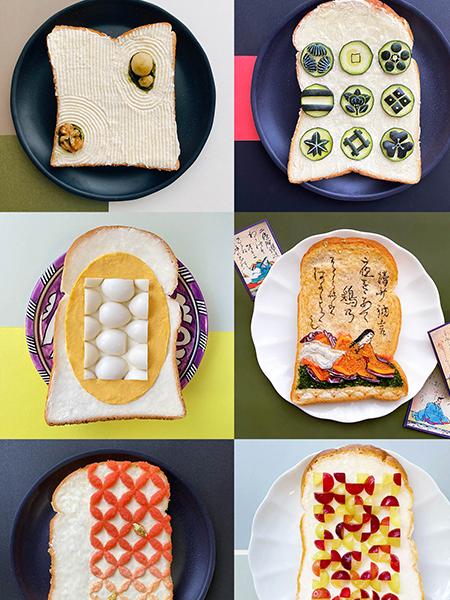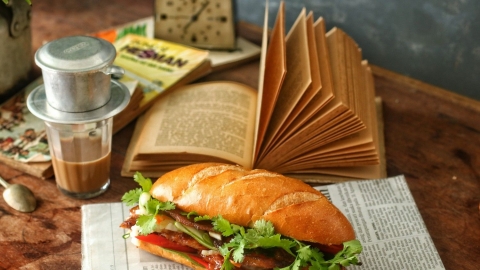Manami Sasaki is a Japanese watercolor illustrator who works for a design company. During the lockdown, she created artworks on slices of toast while working from home.
Every morning, she uses her bread slices as paper to draw unique pictures and post them on her account.Instagrampersonal. The bread paintings have different themes, from famous artworks by talented Japanese designer Ikko Tanaka to Japanese rock gardens. The ingredients she uses can be easily found in any Japanese kitchen such as seaweed, tomatoes, nuts...

In the picture is a slice of bread that simulates the painting.200th Anniversary of Shakaru's Birthby artist Ikko Tanaka. On the cake, the famous Japanese ukiyo-e artist Sharaku is colorfully recreated with a combination of ingredients including cinnamon, margarine, sour cream, chocolate, kiwi, cherry, and blueberry jam.
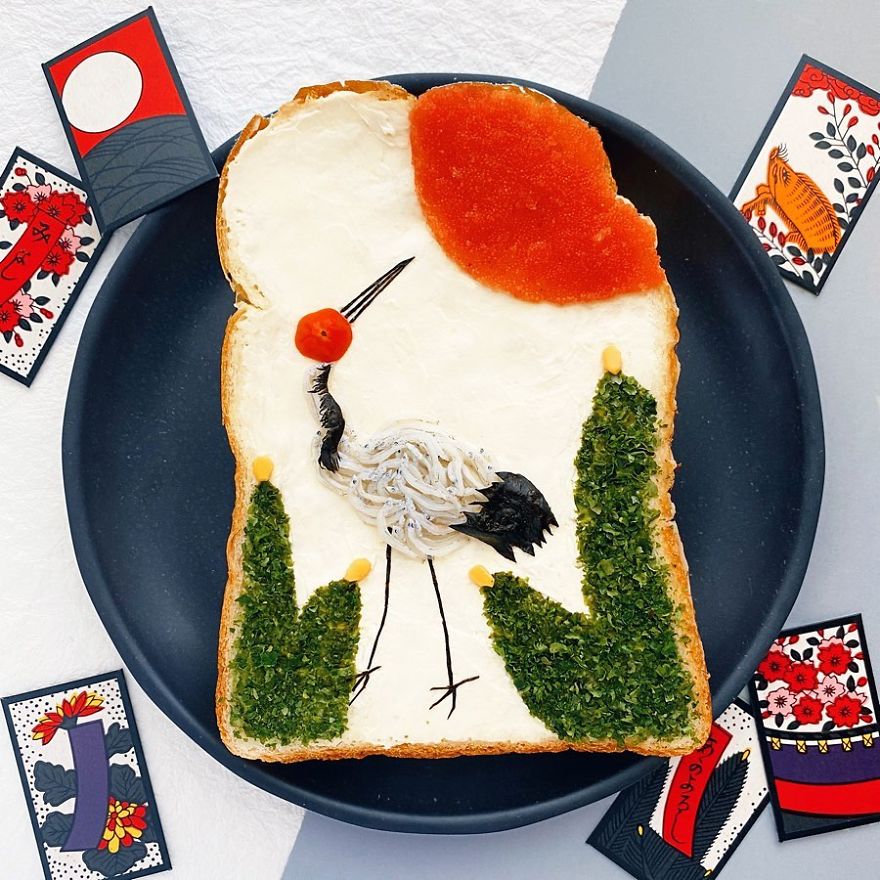
Made from sardines, seaweed, salted cod roe, sour cream and cherry tomatoes, this slice of bread is a picture of a flower card, or hanafuda - a traditional Japanese card game. There are twelve sets of cards, each named after a month and its associated flower. The card is depicted as a Tancho crane - a symbolic bird in Japanese culture.
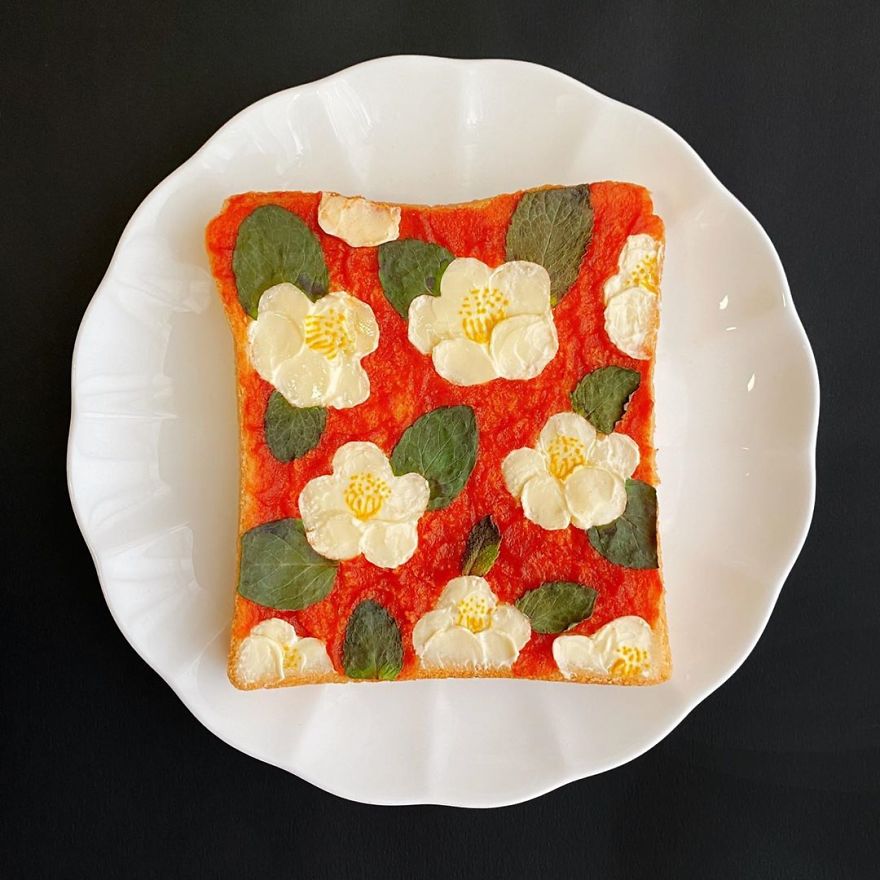
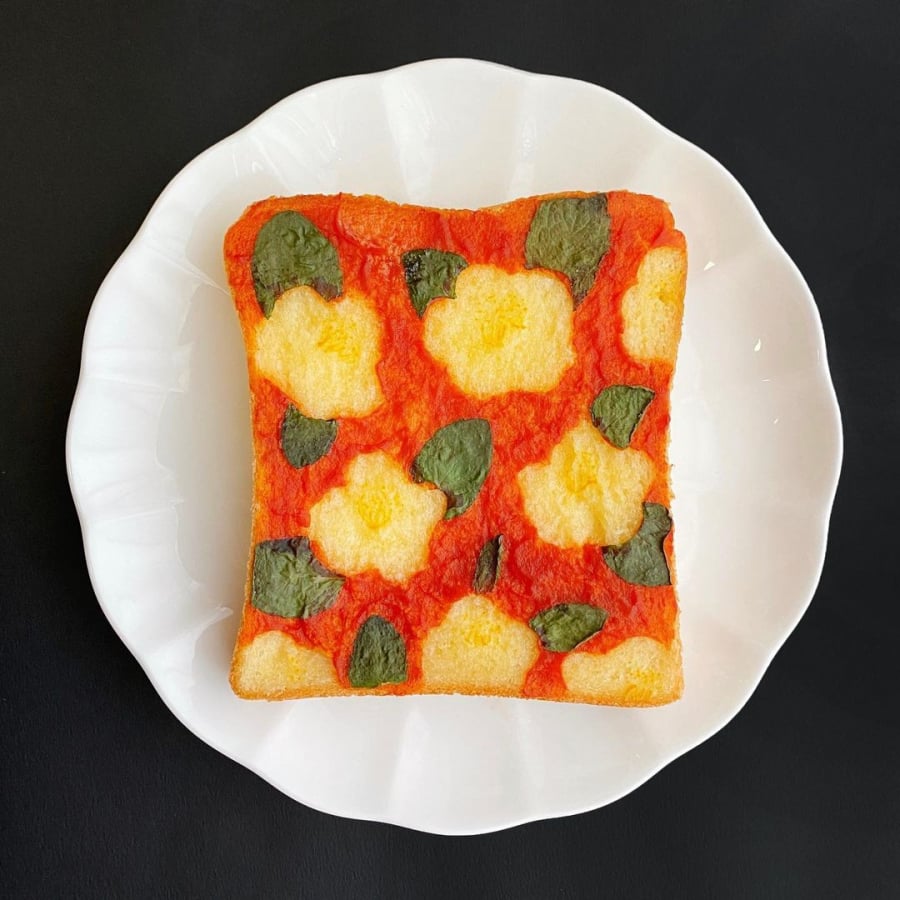
A jasmine-inspired creation made from tomato sauce, margarine, mint leaves and mustard. Once baked (right), the flowers melt and the pistils disappear, creating an artistic blurred photo effect.
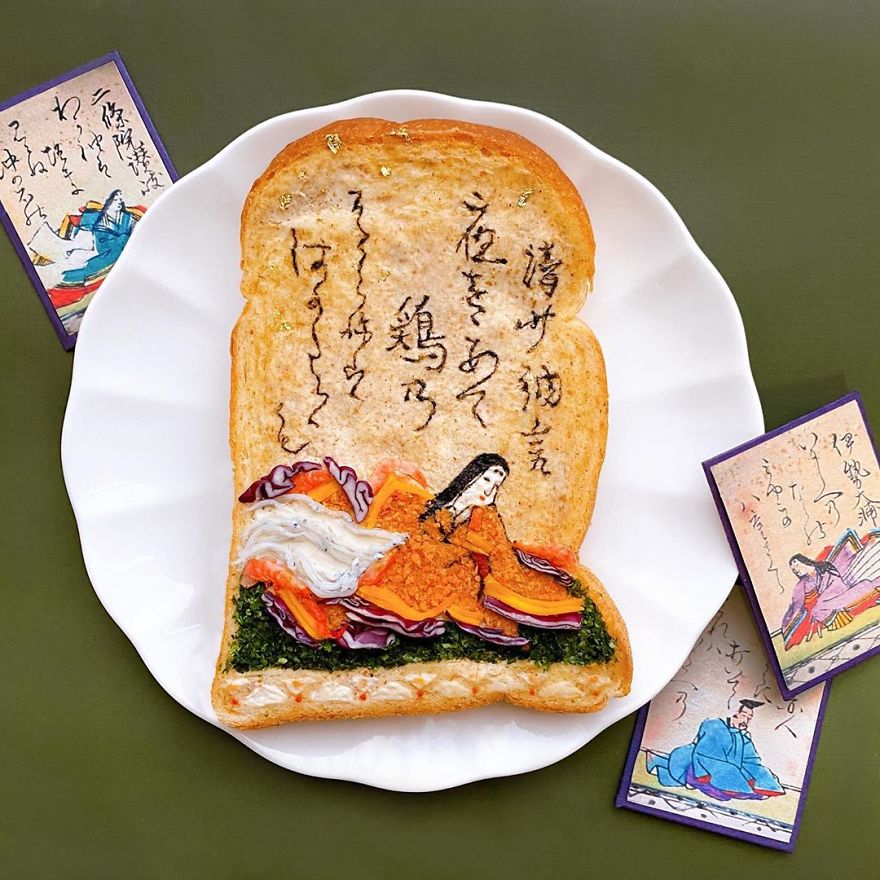
The work simulates a portrait of Sei Shōnagon - a famous female writer and poet who lived around the year 1000 during the Heian period of Japanese history. This elaborate slice of bread is made from sour cream, sardines, squid, salmon, purple cabbage, shrimp, seaweed, and cheese.
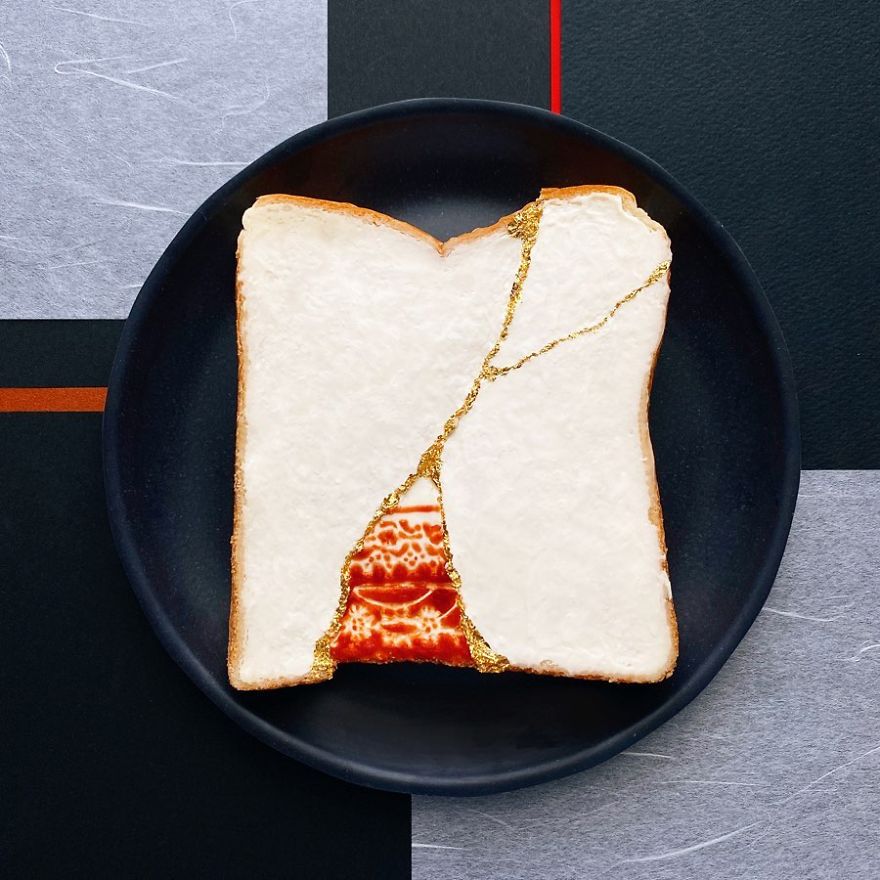
The cake is inspired by Kintsugi, the Japanese art of repairing broken pottery by filling the broken parts with lacquer, coated or mixed with gold, silver or platinum powder. The bread slice is based on the Kintsugi philosophy - "the wound is where the light enters you." On top of the cake, the artist used sour cream, edible gold leaf and tomato sauce.

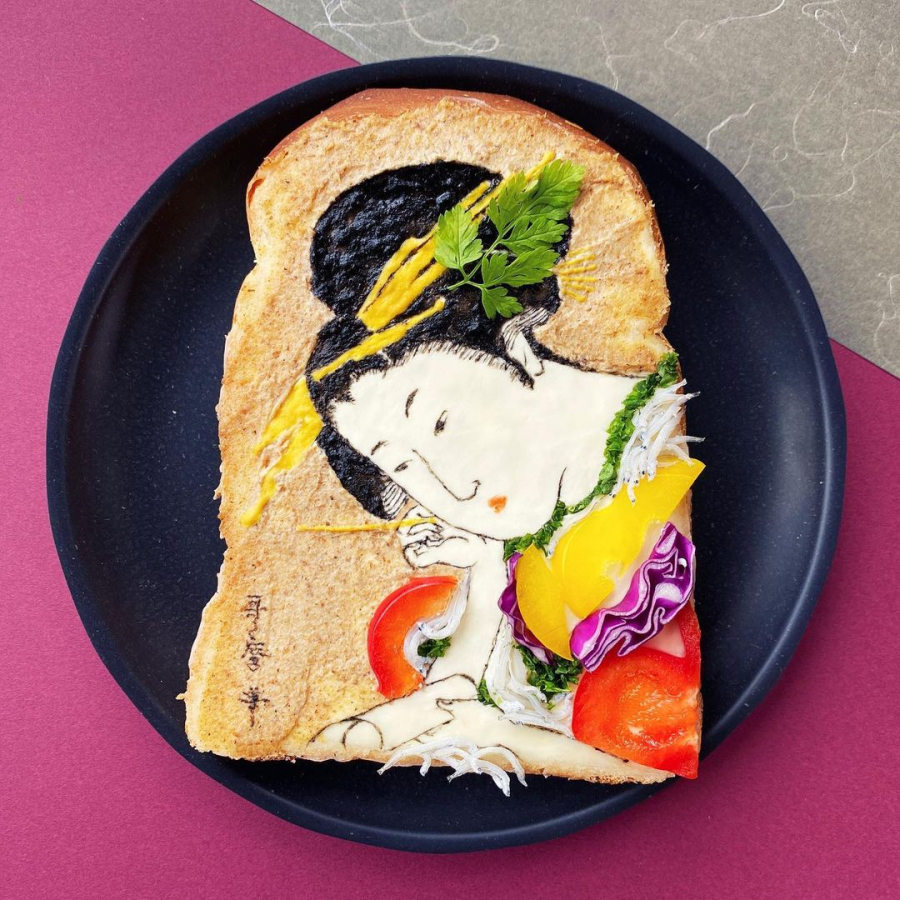
The two slices of bread are themed after the works of Chojiya Misayama by the famous ukiyo-e artist Kitagawa Utamaro. Unlike other ukiyo-e paintings of beauties (which are a representative genre of ukiyo-e), Utamaro's works focus specifically on the female face and facial expressions in close-ups. Sasaki used many typical Japanese ingredients such as Mentaiko cod roe and squid to recreate these two paintings.
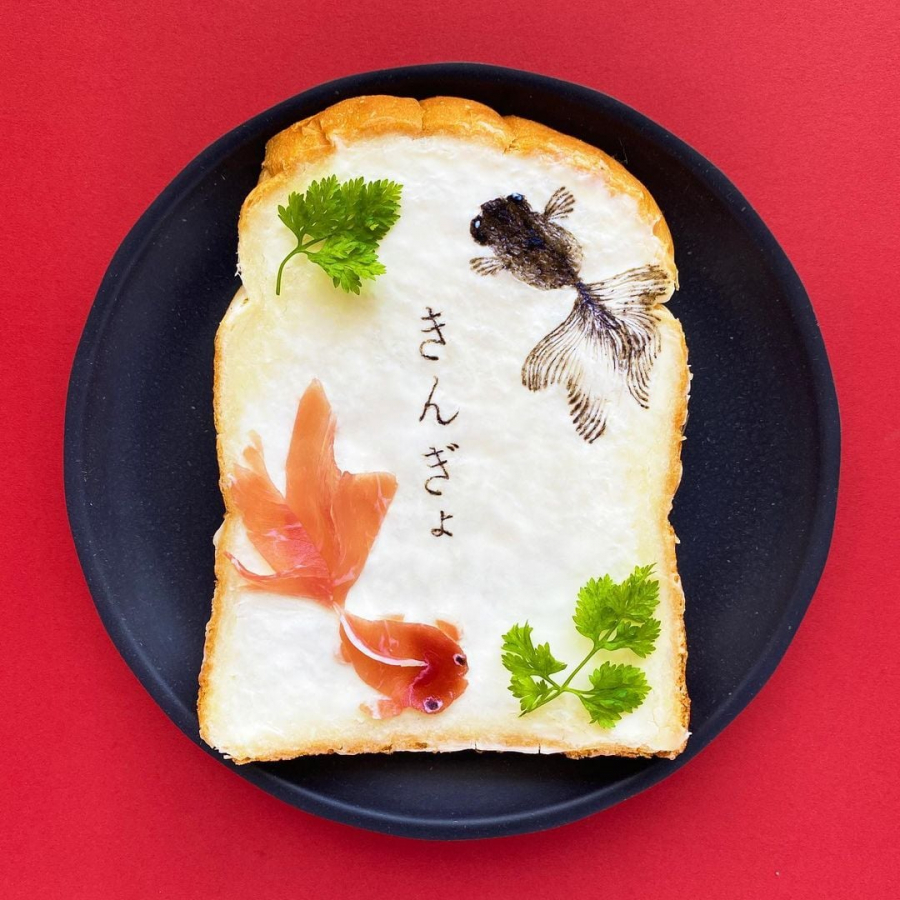
Under the photo posted on Instagram, Sasaki shared that the day he made this cake was very hot, so he chose the theme of Japanese goldfish, creating a picture of two fish swimming with ingredients from prosciutto ham, squid, chervil and the cake base was covered with a layer of sour cream. Goldfish is a popular image in the life and art culture of the Land of the Rising Sun, symbolizing many meanings such as the symbol of fathers, of sons, symbol of luck, happiness and wealth.

The rock garden-inspired bread slice, made with sour cream, nuts, and matcha. In the caption for the photo, Sasaki revealed that the cream lines on the bread can be created with a comb, and that using basil instead of matcha would also be delicious with sour cream. The artist also shared that her favorite rock garden is Ryoanji Temple.


Not only does the artist recreate Japanese culture and art, but he also occasionally creates slices of cake with very "Western" themes. This slice of cake, inspired by a 1950s American romantic comic, uses a variety of ingredients, including curry powder, cod roe, squid, carrots, etc. Sasaki also cuts the slice of cake in half to create a transition effect just like in the comic.
The time it takes to create a piece of art depends on the subject matter and on average it takes about three hours. The most elaborate works take up to six hours to complete. When faced with a lot of work, Sasaki often chooses a simple subject.
“I choose the subject the night before, thinking about the ingredients I like to eat the next morning. Then I go to the grocery store, buy more ingredients, and go home to create. About 60% of the preparation for the dish is done the night before. I wake up in the morning, finish the piece, then take a photo and eat it,” the artist said.
"My favorite moment is when I bake bread, my creativity and food become one. The smell of the bread is so fragrant that I just want to eat it quickly" - Sasaki shared.
Some other "bread paintings" by Japanese designers
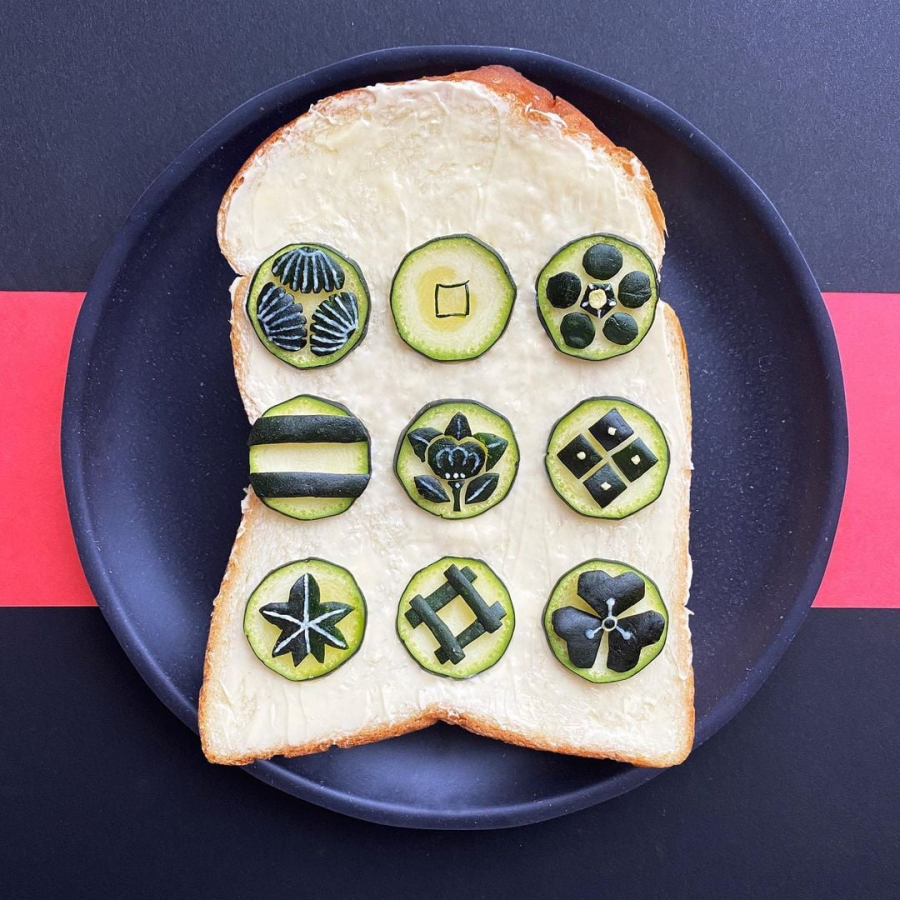
Traditional Japanese patterns combined on a slice of bread
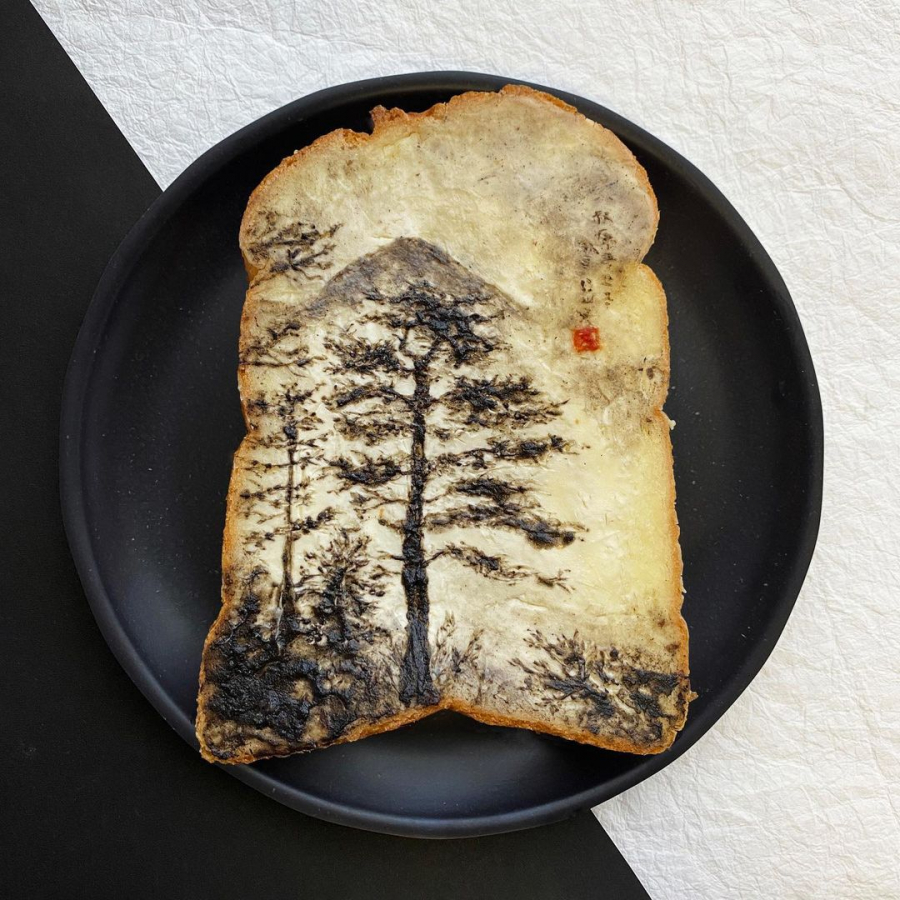
Recreate a work by photographer Lang Jingshan with sour cream, squid ink sauce and a little ketchup

The moon painting is made from ink sauce and a smear of butter.
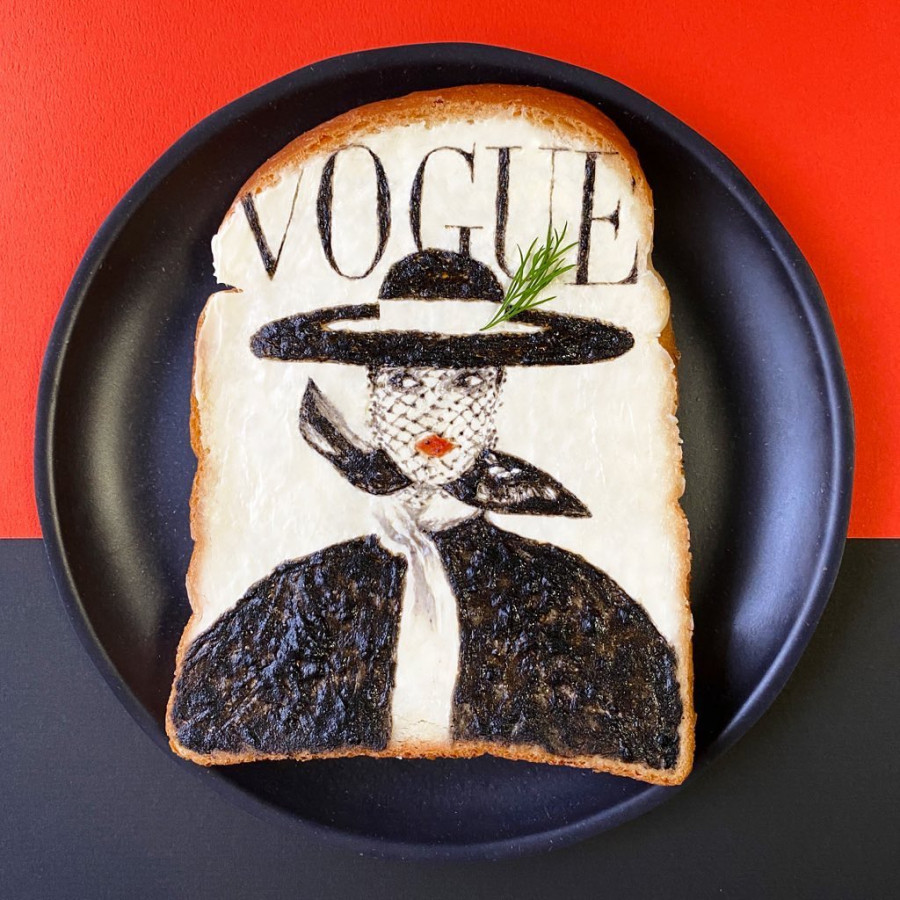
Slice of bread mimicking the cover of Vogue Magazine from 1950






